Liisa Kyle's Blog, page 11
May 10, 2017
How to Make Affirmations Really Work

image via commons.wikimedia.org
Affirmations seem so 80’s. Writing down positive thoughts and repeating them daily seems rather quaint and naïve…rather like expecting Santa Claus to leave you a choo-choo train (or a Pulitzer Prize) on Christmas morning. Positive affirmations are still around as a self-improvement tool because they are helpful for many people. If they didn’t work, they’d be long-gone relics of the 1980’s alongside legwarmers, shoulder pads & the musical stylings of Frankie Goes to Hollywood. The problem for us DaVinci’s, however, is that we get bored very easily and so affirmations lose their effectiveness in short order. We may feel an initial ‘ping’ of epiphany – we might find them helpful reminders at first—but then, after a few days our affirmations grow stale like a Katy Perry song you’ve heard far, far too many times. In short order, we don’t register the Post-It’s we’ve dutifully placed on our mirrors and monitors. When repeating our affirmations, our minds wander to things like “Do I need to buy asparagus?” and “Oh look, a piece of lint.” But you can make affirmations much more effective by making them more active.
Here’s how:
1. Compose a new affirmation for each day.
Each day, take a moment to write a simple, declarative positive sentence that represents a thought you’d really like to believe. For example, “I am living a wonderful life.” “I find joy in every moment.” “I am a kick-ass juggler.” Whatever floats your boat on that particular day. Write your affirmation down on an index card. Repeat it out loud a few times, with feeling. Make it your screen-saver message for the day or put it on a Post-It where you’ll see it and read it several times over your waking hours. On the following day, compose a new affirmation. Write it on a new index card. Make it come to life for you. Replace yesterday’s screen-saver or Post-It with a new one.
2. Select one affirmation and process it more deeply.
When you get bored writing new affirmations, you can rifle through your previously written index cards and pick one at random. Write answers to the following questions:
(a) How do I know this to be true? When and where have I seen evidence of this in my life?
(b) What obstacles interfere with this?
(c) How can I overcome these obstacles?
By processing your earlier affirmation at a deeper level, you’ll gain new insights and give the affirmation more power. For today, anyway. But that’s all we’re seeking.
3. Focus on the “Blurt”.
This time-tested method pioneered by creativity guru Julia Cameron can help DaVinci’s deep dive into their core beliefs:
1. Choose an affirmation. For example, “I am a successful sousaphone player.”
2. Write it down on a sheet of paper that has plenty o’ extra space.
3. Wait for that little voice in your head that balks at your affirmation. It might say something like “Successful? Ha! If you’re so successful, why haven’t you won any sousaphone awards? Why aren’t you living in a waterfront mansion, paid for by sousaphone royalties?” Or something like that.
4. Whatever that nasty voice ‘blurts’ out, write it down.
5. Dispute the blurt. For example, “There are plenty fine sousaphone players who haven’t won awards or live in mansions. Those are unrealistic goals. I know I’m an adept player because people applaud when I play and …” At this point, the nasty voice will blurt out something like, “They’re only being polite!” at which point, you can contest that, too. If you allow yourself to do so, you can engage in a rather vivid, hilarious conversation with the nasty voice. The more you do so, the deeper you can get to what’s really the core issue…self-worth or self-love or something similar. Whatever you discover, this process is an extremely active and engaging way to use affirmations.
***
Activity: this week try all three methods to make your affirmations more effective. See which works best for you.
***
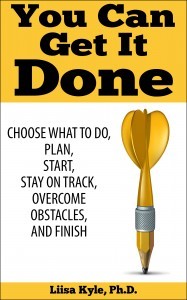 Check out my book YOU CAN GET IT DONE: Choose What to do, Plan, Start, Stay on Track, Overcome Obstacles, and Finish
Check out my book YOU CAN GET IT DONE: Choose What to do, Plan, Start, Stay on Track, Overcome Obstacles, and Finish
Available here in paperback or e-book format: http://bit.ly/YouCanGetItDone
***
If you’d like to share or publish this article, you may, if you include the author’s name, a link to this original post and the following text blurb:
Are you struggling with too many talents, skills, ideas? You may have The Da Vinci Dilemma™! Find tools, fun quizzes, coaching, inspiration and solutions for multi-talented people at http://www.davincidilemma.com/.

April 5, 2017
Why You Might Just Be a Perfectionist

image via commons.wikimedia.org
I understand. You’re not a perfectionist. You’re just picky. Or ‘hard on yourself’. Or you ‘have high standards’. Or you like things to be done properly.
Guess what?
* If you’re emails, tweets & Facebook posts are free of spelling mistakes, you just might be a perfectionist.
* If you noticed the typo in the previous sentence, you might just be a perfectionist.
* If you get frustrated fast when you are learning a new skill and haven’t quite got the hang of it yet, you just might be a perfectionist.
* If you have a wonderful dinner party…and you find yourself beating yourself up after your guests leave when you realize you forgot to serve the grapes with the hand-dipped chocolates…you just might be a perfectionist.
* If you ignore a dozen terrific reviews to fret about the one lousy writeup you got, you just might be a perfectionist.
* If your loved ones are hesitant to show you their creations, you just might be a perfectionist.
* If you score 96% on something…and yet you feel a tad disappointed, you just might be a perfectionist.
What’s in a label?
No-one likes to be labeled. Nobody enjoys thinking of themselves as anything but their unique self. In this case, however, the value of the label “perfectionist” is that it alerts you to patterns of behavior that are (a) hurting yourself and (b) hurting others around you. The label per se isn’t important — but what is key is that you are aware of how this concept is affecting you.
How does Perfectionism affect you?
1. It generates excessive stress.
If you’re picky, hard on yourself or have high standards, you’re putting yourself under excessive stress. You’re probably toiling, rather than working. You’re making life much more difficult than it needs to be.
2. It puts those around you under excessive stress.
I promise you that if you are stressing over something, you are not doing so solo, in a vacuum. You are leaking stress onto everyone with whom you come in contact — your colleagues, your friends, your family, your pets and innocent passersby as well. Think of the family member you snapped at or the slow cashier you stomped away from. When you’re stressed out, you leave few in your wake unscathed.
3. It makes you judgmental.
You may think you are open to experience, tolerant of others and otherwise zen. And perhaps you’re all of those things to some extent. But part of being perfectionistic is a process of constantly evaluating yourself. And others. And how things are done — or should be done. You frequently make judgments– especially when things unfold differently from your expectations.
5. Fear and anxiety are your constant companions.
You fret. You worry. You’re afraid of how things are unfolding. This takes its toll physically, psychologically, professionally and socially. Think of the ‘nervous Nellies’ you know. How healthy are they? How pleasant to be around? Think of them as mirrors.
6. You tend to be a pessimist.
You tend to expecting the worse (I’ll never finish and if even if I do, this is going to be terrible). When negative events do happen, you tend to extrapolate and exaggerate them. (See? I didn’t get the part. I’m a lousy actor. I’m a complete failure. My whole life is a waste. I’m worthless).
7. You’re a control freak.
You are detail-oriented to a fault. You expend a lot of energy trying to control outcomes, regardless of whether or not you actually have any power to affect how things unfold. Part of fretting or worrying, for example, is a false way of attempting to control the future. It’s as if your subconscious believes that if you pay your dues by worrying enough about it, it’ll turn out alright. I promise you, it’s going to turn out the way it’s going to turn out…regardless of how much you worry or don’t worry.
8. Contentment is rare and fleeting.
You are rarely satisfied with yourself and with circumstances. Even when things turn out magnificently, your happiness is brief.
So what’s a perfectionist to do?
I’ve written a comprehensive book on how to Overcome your Perfectionism. If the preceding points ring true for you, I hope you’ll check it out. In the meantime, here are some basic steps you can take to begin to curtail your perfectionism:
1. Be aware.
Monitor yourself for signs of stress, fear, anxiety and pessimism. Notice when you judge yourself or others. Realize when you are trying to control the situation…or others. Observe your effect on others.
2. Interrupt perfectionistic behaviors.
When you catch yourself judging or controlling or fretting…stop. Pat yourself on the back for recognizing your perfectionism when it happens.
3. Aim for ‘good enough‘ rather than perfect.
Life is imperfect. It’s impossible for everything to be ideal in every moment in every life domain. Learn to loosen your very high standards so that you are content with ‘good enough’ rather than making yourself crazy striving for perfection.
4. Practice acceptance.
Learn how to accept your situation as it is, accept others as they are…and also to accept yourself especially when you feel you’re falling short in some way.
5. Learn to relax.
By learning meditation and relaxation techniques, you will disrupt the stress and fear that underlies perfectionistic behaviors.
6. Be kind to yourself.
Perfectionists are notorious for beating themselves up — for being hard on themselves. Counter this by treating yourself well. Try the carrot instead of the stick to motivate yourself. Savor frequent simple pleasures. Ensure your life is well balanced. Live healthfully.
*****
Activity: Answer the following questions:
What do you do that indicates that you might just be a perfectionist?
How does your perfectionism affect you?
How does your perfectionism affect others?
What can you do to reduce your perfectionism?
*****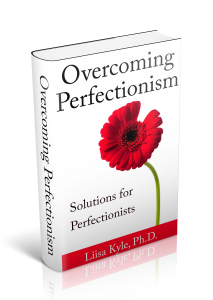 For a comprehensive approach to overcoming perfectionism, check out my book: http://bit.ly/PerfectionismSolutions
For a comprehensive approach to overcoming perfectionism, check out my book: http://bit.ly/PerfectionismSolutions
*****
How about you? In the comment box below, please tell us how you know you’re a perfectionist…and/or what’s helped you deal with it.
*****
Want to re-publish this article? Go for it – just include the author’s name, a link to this original post and the following text blurb:
Are you struggling with too many talents, skills, ideas? You may have The DaVinci Dilemma™! Find tools, fun quizzes, coaching, inspiration and solutions for multi-talented people at http://www.davincidilemma.com/ .

March 1, 2017
Quelling Your Inner Critic
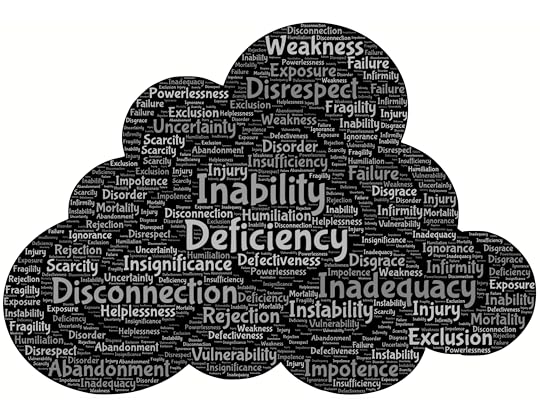
image via commons.wikimedia.org
Do you have a negative little voice in your head? Do you harbor an internal critic that tells you something you’re doing isn’t good enough or calls you nasty names or fans your deeper fears? It’s not pleasant and it doesn’t play fair. It tends to kick us when we’re at our most vulnerable. It’s natural to have some fears and doubts but when they run amuck, it can harm our health and well-being. They can squelch our creativity and kill our productivity. It is vital that we learn to detect and quell our Inner Critic when it arises.
Here’s how:
1. Understand the purpose of your Inner Critic.
As harsh as your Inner Critic may be, know that it’s actually trying to help you. It’s your brain trying to protect you from unknown perils. It uses fears and doubts to prevent you from taking risks. It’s an ancient part of our biology that developed to prevent us from tangling with predators or consuming possible poisons or wandering away from safety.
In modern life, however, it can be problematic. It can get triggered by emotional stress that has little to do with our physical well-being. When it perceives pressure — to do well, for example — can initiate “fight or flight” biochemical responses, fears, and doubts. If you don’t recognize what’s happening, this internal danger-detector may cause you to walk away from an exciting opportunity or self-sabotage yourself on a challenging project.
That’s why it’s so important to pay attention. When you detect fears and doubts, pause. Ask: is this my Inner Critic?
2. Recognize your Inner Critic.
Pay careful attention to what’s going on in your head. To what extent are your thoughts and feelings appropriate for what’s going on?
Our Inner Critics tend to be divas so be on the lookout for exaggerated reactions and thoughts of impending doom: If you are feeling inexplicably negative about your progress or project, it might not be valid. Your criticisms and concerns might just be your Inner Critic running amuck. (Danger! Danger! She’s trying something new! We might crash and burn!)
Once you detect it, listen to it: What does your Inner Critic tend to say? With what tone? Does this inner voice sound like anyone in particular? A parent perhaps or a disapproving teacher or boss?
Of what is your Inner Critic afraid? Failure? Success? Embarrassment? Dismemberment by wolves?
Also be aware of which situations tend to triggers your Inner Critic. Under what circumstances is it more likely to arise? When you are most vulnerable to it?
3. Understand its impact on you.
How do you respond to your Inner Critic? Does it paralyze you or spark you into action? Does it make you sad or hopeless? Does it frustrate or enrage you? How does it affect your stress level? Your health and well-being?
For that matter, how does it affect others around you?
4. Name your Inner Critic.
If you literally give a name to your Inner Critic, you can call it out — and laugh at it — when it arises.
I call my own inner voice Picky McStrict. Picky is the one who shouts “Idiot!” when she finds a typo in a Facebook post I’ve written. Picky is the one muttering “you are lousy at this” when I’m doing something for the first time. Picky has very strict rules about the Herculean struggle and toil required before one can “earn” success.
Picky means well — and frankly, she’s helped me accomplish a lot — but she’s really more of a hindrance. She makes me doubt myself. She sucks the enjoyment out of the task at hand. She applies unhelpful stress to me and those around me.
I’ve learned to recognize her not-so-dulcet tones and dismiss them, accordingly. Okay, sometimes I have to give her a stern talking to…but the point is she is no longer driving the bus. I am.
My clients use names like “Sir Harps-a-lot”, “Ursula”, “Poopyhead”, “Nick the Dick”, “Lady Gwendolyn”, “El Stupido,” and “Mr. Dibbs my Grade 2 teacher” to address their own inner voices. I invite you to find an appropriate name for your inner nemesis — and to practice recognizing it when it arises.
5. Challenge your Inner Critic.
Dispute the fears and doubts as soon as you detect them.
It’s helpful to actually write out whatever your Inner Critic is saying, then analyze each statement. Is it valid? What evidence is there to the contrary? Might the opposite be true?
Should you choose to engage this voice in conversation, you can expose just how ludicrously harsh it is — and put it in its place. Use two different pens to actually write out the conversation. Be candid — and have fun with it.
For example:
Sir Harps-a-lot: This is not nearly good enough.
You: Aha! I know that voice! I hear you, Sir Harps-a-lot.
Sir H: Well, I’m concerned for your professional reputation. Your work isn’t up to snuff.
You: “Up to snuff.” You sound like my sixth grade teacher. The one who marked up my homework with red ink.
Sir H.: He and I go way back. We don’t want you embarrass yourself with a sub-par performance on this project.
You: What I’m doing is better than what 99% of people on the planet could be doing, under the same circumstances.
Sir H.: You could do better than you are.
You: Possibly. But not without making myself sick and/or making my colleagues sick of me. As it is, I catch them cringing when I ask them to make adjustments.
Sir H.: See, the project is tanking and your co-workers know it.
You: Wow. Harsh, much? The project is not tanking. We just have to work out some kinks and we haven’t yet found solutions.
Sir H.: See? You’re failing. You’re not good enough to do this project.
You: I am plenty good enough for this project. I am a well-trained, competent person doing the best I can, given the time frame and resources I’ve been given.
Sir H.: What if your work isn’t good enough? What if you lose your job and nobody else will hire you?
You: First, I’m not going to lose my job. Second, if I did, there are other jobs out there. Or I could start my own business. This project does not define me or my career. It does not determine my future.
Sir H.: I’m just trying to help.
You: Thanks but you’re not helping. You’re making me doubt myself and my abilities.
Sir H.: Gosh, I didn’t mean to. I just want you to be safe and happy. Um. I’m sure your project will turn out fine.
You: Yes, it will. Now please go away.
***
Activity: Do yourself a favor and take a few moments to write out answers to the following questions:
1. What kinds of things does your Inner Critic tend to say?
2. What tone does your Inner Critic use?
3. Who does your Inner Critic sound like?
4. Of what is your Inner Critic afraid?
5. What situations tend to trigger your Inner Critic?
6. Name your Inner Critic so you can call it out — and laugh at it — when you hear it.
Henceforth, I shall call my Inner Critic_________________
7. Going forward, be on the lookout for your Inner Critic. When it arises, pause. Write out what it’s saying. Refute each statement with facts and evidence to the contrary.
***
For more, check out my workbook: SELF-WORTH ESSENTIALS: A Workbook to Understand Yourself, Accept Yourself, Like Yourself, Respect Yourself, Be Confident, Enjoy Yourself, and Love Yourself.
Available here: http://bit.ly/SelfWorthEssentials
*****
Want to re-publish this article? Go for it – just include the author’s name, a link to this original post and the following text blurb:
Are you struggling with too many talents, skills, ideas? You may have The DaVinci Dilemma™! Find tools, fun quizzes, coaching, inspiration and solutions for multi-talented people at http://www.davincidilemma.com/ .

February 27, 2017
Should You Specialize? (JLo vs. Celine Smackdown!)
 OK, so it’s not exactly a “smackdown”. But it is an important question.
OK, so it’s not exactly a “smackdown”. But it is an important question.
I recently spent a week on solo retreat in Las Vegas (and yes I do know how contradictory that sounds!) working on the DaVinci Dilemma book and other aspects of my business.
While I was there I got to see Celine Dion in concert — her 1022nd to be exact. Right down the Strip, Jennifer Lopez was also putting on her own show. It struck me that these two powerhouse performers had taken a very different approach to their craft and career. While Celine Dion had devoted her time to one talent — singing — JLo had pursued many at once (at last tally, acting, dancing, designing fashion and more, including singing).
So which is better? And more to the point, which is better for YOU? Here are a few questions to help you decide:
Do you love any one thing THAT much?
I could tell that Celine Dion just LOVES singing and performing… so much so that doing the same show night after night after night never gets boring, and she never “mails it in”. She finds her fascination in the small variations of experience — different audience reactions, for example — and in the constant never-ending improvement of her craft, what the Japanese call “kaizen.” Could you be that passionate about any of your talents? You may just have to try it and see. Passion is not one of those things that can be predicted. Or you may know already that there is nothing right now that you would be willing to drop everything else for. That’s good information, because without passion, specializing can’t last. Willpower and commitment on their own have a pretty short shelf life.
Are you more about mastery or about experience?
Do you care if you get to be the very, VERY best at any one of your talents? Or would you be satisfied with being pretty darn good at a few…in a way that may add up to something more, even if that something is just an interesting life? In general (but not always, see J.Lo) the mastery route is a safer bet for career and fortune building. If your core value is more about adventure and sampling everything, you might feel stifled as a specialist even with something you love. My career as an advertising creative director would probably have been a lot more profitable had I not decided to stay in France for 11 years. But then I would never have had that experience, learned a language, made so many fascinating friends, learned watercolor painting… or gotten to sing and dance at Disneyland Paris. (See photo!)

Lisa R Rocks it Out at Paris Disneyland
How do you FEEL?
If you are stressed out by how many things you have going on and the lack progress in any of them, it’s no way to live. You might consider specializing at least for a while, until you’ve got one plate really spinning. On the other hand, if you feel energized, if one activity informs and gives added creativity to the others, and you enjoy the freshness and “break” you get from bouncing among projects, then great. Only you can know how much you can tolerate before your multi-talented lifestyle goes from creative to oppressive. Sometimes there is just one thing too many, and scaling back just a little will get you into your sweet spot.
I explored this topic a lot more in one of my very first Facebook Live videos! It was a fascinating conversation, that you can still join on the replay.
Activity: Check out the video, and add your comments about specializing vs. pursuing many things. We really want to hear what you think, and your own tips for managing your talents for your most fulfilling life.

February 1, 2017
Sitting Too Much? Introducing a Healthier Strategy to Get Things Done

image via maxpixel.com
Many of us live sedentary lives, tethered to our computers or work benches. Sitting hurts our health. Besides making us fat, it increases our likelihood of getting cancer — and doubles our risk of cardiovascular disease. The more we sit, the less long we live. (If you want the gory details, here’s a vivid infographic with some relevant research.)
Standing desks are an option but may be impractical or uncomfortable.
Thankfully, recent research has revealed a simple, easy, effective way to overcome the problems caused by excessive sitting. The solution is to take five-minute movement breaks throughout the day.
In this study, researchers compared what happened when office workers spent the day sitting versus those who walked on a treadmill for 30 minutes a day. It didn’t matter if they walked for thirty minutes straight or if they walked for five minutes, six times during the day. Those who spent time moving during the day had more energy, less fatigue, an improved mood, and reduced food cravings than those who just sat.
Think about it: assuming you are able-bodied and uninjured, walking for five minutes is easy to do. If you work in an office you can walk to the rest room, the break room, the mail room, the photocopier, a co-worker’s desk. If stairs are available, you can walk up and down a flight or two. If you work at home you can walk around your home inside or out. You can scamper about with your pets or put on a song and dance, if you feel so inclined. Poof! Five minutes go quickly. And the benefits are many: When you return to your desk, you’ve given your back, neck and shoulders a break from the hunched over computer position we all sink into. You’ve got your blood pumping a wee bit, which gives you energy and lifts your mood. You’ve given your brain a break. Taking a few minutes away from the task at hand allows your creativity to burble on the back burner, inviting spontaneous ideas and solutions to erupt.
A five-minute movement break is easy to do and can yield many benefits — so why not try it? If you take a mini movement break a few times a day, you’re counteracting the damage of sitting and you’re probably giving your spirits a lift as well. [Note: If you are disabled or injured, a five-minute break of any kind has benefits. To the extent you can stretch or shift your body, do so. To the extent you can alter your physical location briefly, do so. Look for creative ways to insert variety into what would otherwise be long stretches of sameness.]
Remember in high school? At the conclusion of one class, a bell would ring denoting a few minutes to walk to your next class. It probably felt good to stand up and move your body after sitting for an hour. It was a visual break. Possibly a social one in which you could greet friends in the hall or chat with a pal en route. This walking break functioned like a mini reset button: no matter what happened in the class before, there was a built in “refresh” process between classes. It may have even kept you thinner.
When I began testing these mini movement breaks, I noticed a couple of unexpected benefits. For one thing, my dogs love it. They get extra attention and activity every hour on the hour. For another, I saw a marked uptick in my productivity. That’s because I melded the mini movement breaks with my Magic Hour Method to make progress on multiple priorities in a given day. What emerged was a flexible strategy by which one can toggle among projects, alternating 55 minute focused work sessions with five-minute movement breaks in between.
Somehow, the five-minute movement breaks supercharged my work sessions. Walking around for just five minutes between work sessions gave me fresh energy and a mental “reset” such that I found myself getting more done, more efficiently, with more ease. I’m calling it Magic Hour Method 2.0
***The Magic Hour Method 2.0***
What follows is a technique to make progress on multiple projects while taking better care of your body. It is designed to be flexible so you can adapt it to suit your own unique circumstances and preferences.
Step One: Identify your priorities
What are your top priorities for the week? Let’s say you want to spend time on work project #1, work project #2, marketing, and research. (If you work at home, you may wish to add some personal projects or domestic responsibilities to the mix.) Do what makes sense for you.
Step Two: Choose an easy way to track your progress
The easier the better. A low-tech approach is to assign a color to each priority. (For example project #1 is blue, project #2 is pink, marketing is green, and research is orange). Going forward, every time you spend 55 minutes of quality time on that activity, give yourself a colored star on your calendar.
If you prefer, use your phone, tablet, or computer to track what you do.
Step Three: Apply the Magic Hour Method and Mini Movement Breaks to the mix.
When you sit down to work:
Remove or reduce likely distractions.
Identify your top priority at that moment.
Set a timer for 55 minutes.
Spend this time engaged in quality, focused progress on your chosen priority.
When the timer goes off, put a star on your calendar to record your progress.
Set the timer for five minutes. During this time, move your body. Walk. Stroll around. If there are stairs handy, walk up and down them once or twice.
When the timer goes off, identify your top priority at that moment. This might be to continue what you did in step one, or it might be something else.
Repeat steps 2 – 7. Do this as much as many times as make sense, given your particular circumstances.
Adapt this formula to suit your needs and to accommodate rest breaks, meals, interruptions, and “things that arise that require your attention”. You may wish to insert a shorter period to attend to smaller tasks (e.g. phone calls, answering your email) — or to time box things that tend to swell (like internet surfing and social media). If you have the flexibility to do so, you might insert two minute meditation or stretch breaks as needed, for example.
What’s with the colored stars?
There’s something about chronicling your progress that is intrisically rewarding. At the end of the day, you can see what you’ve accomplished. It’s also a visual way to monitor balance. By looking at the ratio of colors, you can assess, at a glance, what adjustments are needed going forward. Maybe, when you look at the stars at the end of the week, you see that “marketing” got short shrift. You can give it more attention next week.
If you expand this approach to include personal priorities, you can easily detect your work-life ratio and make adjustments, accordingly.
***
However you choose to adapt and apply this technique, it’s possible to make real, discernible progress on your top priorities, while taking better care of your health. Try it and see for yourself.
***
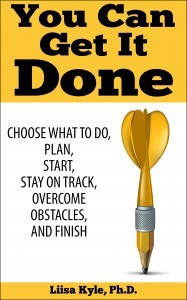 Want more tips and techniques on getting things done? Check out my book YOU CAN GET IT DONE: Choose What to do, Plan, Start, Stay on Track, Overcome Obstacles, and Finish
Want more tips and techniques on getting things done? Check out my book YOU CAN GET IT DONE: Choose What to do, Plan, Start, Stay on Track, Overcome Obstacles, and Finish
Available here for only $3.99: http://bit.ly/YouCanGetItDone
***
Want to re-publish this article? Go for it – just include the author’s name, a link to this original post and the following text blurb:
Are you struggling with too many talents, skills, ideas? You may have The Da Vinci Dilemma™! Find tools, fun quizzes, coaching, inspiration and solutions for multi-talented people at http://www.davincidilemma.com/.

January 4, 2017
Defining Your Year

image via commons.wikimedia.org
You are a busy person juggling many projects, ideas, and talents. You’ve got a lot going on. If you could choose, what kind of year would you like 2017 to be?
It’s up to you. If you wish, you can orchestrate the upcoming year around whatever is important to you at this point in your life.
What is your number one priority? What kind of tone would you like to set for the New Year? If you gave 2017 a theme, what would it be?
Susan’s number one priority in 2017 is to have fun. Keith would like to focus on his health. Maria is calling 2017 her “Year of Relaxation” while Clive is looking forward a “Year of Positivity”. Sandra would like to devote the year to getting organized in every area of her life. Marta is alarmed by recent events and would like to dedicate the next twelve months to “Action”.
What kind of year would you like 2017 to be? What would you love to do this year?
Maybe you’d like to travel. Or to learn. Or to create. Or to do good deeds. Perhaps you’d like this to be the “Year of Music”. Maybe you’ve been overly career driven so this is the year you’ve like to give more attention to “Home”.
***
Activity: Take a few moments to identify your top priority or theme for the next twelve months. Define it in a word or phrase.
***
Once you’ve identified the overall theme for your year, take some time to think about what that means to you.
***
Activity: Write your top priority or theme on a blank page. Doodle around it. Jot down words or phrases that pop into your head when you think about your theme. Sketch or draw. If you wish, go through magazines and clip out images or words to glue onto the page.
***
Next take a few more minutes to contemplate how you could implement your theme in different areas of your life.
***
Activity: Clear ten uninterrupted minutes to brainstorm answers to the following questions:
When you think about your top priority for 2017, what kinds of activities or events would constitute a great year for you?
When you think about your top priority for 2017, who would you like to be a part of your year? Who would you like to spend time with? With whom would you like to have less contact?
As you think about your top priority for 2017, what would you like to do, experience, learn, acquire, or accomplish in your personal life?
As you think about your top priority for 2017, what would you like to do, experience, learn, acquire, or accomplish in your work life?
After you conclude your brainstorm, review your answers. Circle the one to five items that are most important and most appealing to you.
Rewrite this list of top ideas and put it somewhere you will see it every day (e.g. on your computer, in your phone, on a Post-It by your toothbrush).
***
If you’d like more ideas about Making the Most of 2017, check out my book: http://bit.ly/MakeTheMostof2017

December 1, 2016
Make the Most of 2017
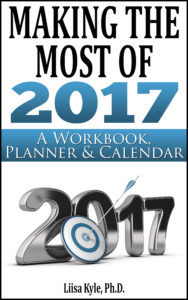
Paperback available here: http://bit.ly/MakeTheMostof2017
What would you like to do with 2017?
Some people like to set specific goals for the New Year. Others prefer to give some general attention to a particular area of their life. Keith’s priority in 2017 is to focus on his health. Maria’s is to relax. Maybe you’d like to travel. Or to learn. Or to create. Or to do good deeds. Perhaps you’d like this to be the “Year of Fun”. Maybe you’ve been overly career driven and this is the year you’ve like to give more attention to your home life.
It’s entirely up to you: What would you like to experience this year? What’s important to you? What would you like to explore or learn? What would you like to accomplish, acquire, or complete?
The beginning of a New Year is a terrific time to pause and ask yourself these questions. New Year’s Eve is more than just a festive excuse to party…it’s a chance for a fresh start. Kinda like pressing a personal “re-start button.” If you choose to do so, you can use the opportunity to look back at the preceding year and take stock of your present circumstances. You can identify what’s working well for you and what’s not. You can make thoughtful, purposeful decisions about how to live the next twelve months. With a little forethought, New Year’s Eve can be a pivot point to do more of what you love and less of what you don’t.
If this sounds appealing, I’ve developed a workbook to guide you through a process to make the most of the coming year. It’s completely up to you: What would you like to do, experience, explore, learn, accomplish, acquire, or complete in 2017?
Note the emphasis on you. You. Not what your Mom or your boss or your childhood chum might want. What kind of year would you like 2017 to be? What matters to you at this point in your life?
What would it mean to you if you made the most of 2017?
Whatever your desires for 2017, I can help. I’m an author, life coach, and Ph.D. in Psychology who has spent the past twenty years helping people get things done, get organized, and get more out of life. I’ve coached individuals, facilitated groups, and taught inventive workshops on four continents.
I’ve designed this book so you can get the most out of 2017. Think of it as a personal seminar with a recognized expert, tailored to your unique circumstances and preferences. Inside this workbook are proven tools you can work through at your own pace to foster whatever is important to you.
That’s what makes this book special. It’s a flexible guide that will elicit different responses in everyone who uses it. It’s up to you to apply your distinctive perspective to create and implement a plan suitable to your particular circumstances.
It’s actually two books in one.
It begins with a Self-Guided Workshop you can work through at your own pace to:
understand and appreciate 2016
generate ideas for all areas of your life
identify your true top priorities for 2017
make achievable plans for 2017
The remainder of this book is designed to keep you on track throughout the year. You’ll have the opportunity to customize the Planner/Calendar to:
implement your plans for 2017
monitor your progress
make adjustments as needed
A Word About “Resolutions”
Given the way in which most people do traditional “New Year’s Resolutions”, they’re not very effective. They tend to be overblown “To Do” lists that become a source of unnecessary frustration. They can be overwhelming or intimidating. They often become abandoned which can cause guilt, shame, and a sense of failure.
The alternative is to create a prudent plan that can be reasonably implemented, given your specific circumstances. That’s the purpose of this workbook.
If you’ve been disappointed by past attempts at “New Year’s Resolutions”, let me reassure you. As a life coach, I’ve developed proven techniques for you to figure out what you want and then devise achievable plans to make that happen.
Maybe you’d like to set some specific goals. Perhaps you’d like to solve a problem. Or participate in some key activities to enhance your life. Or establish new habits or practices that are uniquely gratifying to you. It could be that you have an unfulfilled dream or an unfinished project on which you are yearning to make some progress. Maybe you’d like to reduce or eliminate an unhelpful or unhealthy habit.
It’s up to you. Using this workbook as a guide, you have the opportunity to figure out what’s right for you, right now, to make the most of 2017 — then devise achievable plans suitable to your particular circumstances. The Planner/Calendar is designed to help you actually do what you intend.
Give yourself — or someone else — the give of a wonderful 2017. Paperback available here: http://bit.ly/MakeTheMostof2017

November 7, 2016
Essential Elements of Balance: Part One — Physical

image via commons.wikimedia.org
If you are feeling unbalanced in your life — stressed and at the mercy of too many projects and life demands — it may be time to go back to basics. Consider the fundamental elements of human life. Are you taking care of your essential nature? If not, until you address whatever’s out of kilter, you are unlikely to be productive, happy, or pleasant to be around.
If you look back in history or if you examine indigenous or native cultures around the world, you can see that no matter where (or when) people live, we all need certain key elements. We all need to eat, for example. We all need shelter and safety and community. Yet, weirdly, the more advanced our societies and technology become, the more distanced we can become from fundamental aspects of human life. We get caught up in the commute and the kids’ soccer games and the random demands of our client and the funky noise the car is making. It’s easy to be hijacked by the demands of modern life.
The challenge is to notice when this happens — to be aware if we aren’t taking good care of our bodies, our minds, our spirits and/or our communities. When we detect that things are getting out of whack, we can make adjustments accordingly.
Today, let’s begin a series of articles focusing on different essential elements of balance. Let’s start with your fundamental physical well-being. Here are seven key questions to ask yourself:
Are you drinking water?
This is the first question I ask my clients who complain of fatigue. Our bodies need water for every single biological function. Every cell of every living thing needs water. If you are feeling cranky or run-down or tense, try upping your water intake. Aim to drink an extra glass of water a day for the next week. See how that feels. That might be enough to restore your energy…or maybe you need more. Experiment to see what feels right to your body.
Don’t like drinking water? Add a splash of juice to your glass. Or have some soup. Or make a cup of tea or herbal tea. (There are thousands of flavors of teas — surely you will like at least one of them).
Are you eating healthfully?
You already know this: to the extent you eat diverse, fresh, whole foods and consume less processed products, you will have more energy and better health. If your life demands are compromising the quality of your food choices, look for small, easy improvements you can make, given your unique circumstances. For example, can you add a salad a day to your intake? Or a daily serving of fruit?
Can you buy fewer unhealthy products? What processed foods in your home could you replace with fresher options so that when you are looking for something to munch on, you’re choosing among healthier options? For example, if you don’t have bags of potato chips at home but you do have nuts, fruits and vegetables, than your snacking is likely to be better for your body.
If you tend to enjoy too much of a good thing — if you have difficulty with portion control — can you either pre-portion your food when you get it home or can you buy smaller, pre-portioned options? For example, I adore almonds but it’s really challenging to stop munching once the big bag is open. Instead, I buy nuts that are already pre-portioned in little factory-sealed bags. As a bonus: these little bags travel well and keep well so I’ve distributed them among my car, purses and pockets. When “one of those days” end up interfering with regular mealtimes, I have a healthy snack handy that can tide me over for a while.
Speaking of over-consumption:
Are you over-imbibing?
Do you tend to self-medicate to relieve stress? Prescription drugs, recreational drugs, booze, inhaled substances sure can take the edge off…but when we make a habit of self-meditating, there’s a tendency for us to overdo it. To the extent you can reduce this consumption, the healthier and more balanced you will be. Aim for tiny, consistent, step-wise reductions in those things that you know to be harmful or unhealthy.
Are you moving your body?
We did not evolve to spend all day sitting. Humans need to move. Walking is a universally healthy and fundamental need of our biology. If you are not walking much these days, start with five minutes a day. Establish that habit, then increase your daily walk to ten minutes. Maybe add a longer walk– say 30 minutes or more — once a week. Find creative ways to get more walking in your week. Meet friends for a walk, rather than a meal or a drink. Explore new neighborhoods. Use a FitBit, pedometer, or an app on your phone to monitor how much you’re walking. Aim for a certain minimum each day.
Are you getting the sleep you need?
Another universal human essential: sleep. The amount and timing of sleep varies a lot but the bottom line is that we all need it. Our bodies need sleep — our muscles, our organs, our immune systems, our bones and especially our brains require sleep to function properly. Are you getting the sleep you need? If not — if you’re sleeping too much or too little, what adjustments can you make to your daily or weekly schedule to adjust the amount of sleep you are getting? If you wake up in the middle of the night, here are some suggestions.
Are you listening to your body?
When our life balance is out of whack, we tend to ignore our bodies. Pause for a moment, close your eyes and ask what your body needs. A nap? A green leafy salad? A foot massage? A few minutes of stretching? A dance class? A thicker pair of socks? Hand lotion? Something else? Our bodies often transmit messages to us — and we tend to ignore them until things are so far out of whack, we’re injured or sick. To the extent we can ‘check in’ a few times a week, we can take better care of our physical selves. Try this: twice a week, take a few minutes to scan each part of your body individually for messages. Close your eyes. Scan each part of each leg, each arm, your torso, neck and head. When you detect something requiring your action or attention, do what you can to comply.
Are you connecting with nature?
We are part of nature. We need nature to thrive. Deprived of the natural world, our moods sink and our bodies suffer.
Are you interacting with nature on a regular basis? Are you spending time outside? Do you tend some kind of greenery? Do you have a pet? If so, great. If not, what can you do to increase your time interacting with the natural world?
Again, the idea here is to make small changes to improve the balance in your life. It might be as simple as adjusting your attitude. It’s one thing to dash from the subway to the office focused only on the task at hand. It’s another to spend those thirty seconds paying attention to the sky, the breeze, the birds on that window ledge over there. That might be enough to ground you in the living world.
Or maybe you need more. This is easier in more rural settings but even in a big city, it’s possible to spend time outside, to visit some kind of park or greenspace, to grow a potted plant. Can you get to a trail on the weekend? If you don’t have a pet yourself, can you visit a friend’s dog or cat?
***
Activity: For the next few weeks, make a practice of asking yourself the seven questions. (You could ask one question per day to keep it simple). See if you need to make any adjustments. If so, concoct small, easy changes to gently shift your habits and actions to improve your physical well-being.
***
Stay tuned. Subsequent articles will focus on questions to ask to improve balance in other areas of life.
***
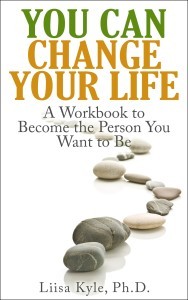 Check out my workbook: YOU CAN CHANGE YOUR LIFE: A Workbook to Become the Person You Want to Be. Available here: http://bit.ly/ChangeYourLifeWorkbook
Check out my workbook: YOU CAN CHANGE YOUR LIFE: A Workbook to Become the Person You Want to Be. Available here: http://bit.ly/ChangeYourLifeWorkbook
***
If you’d like to share or publish this article, you may, if you include the author’s name, a link to this original post and the following text blurb:
Are you struggling with too many talents, skills, ideas? You may have The DaVinci Dilemma™! Find tools, fun quizzes, coaching, inspiration and solutions for multi-talented people at http://www.davincidilemma.com/.

October 5, 2016
New Book: Self-Worth Essentials
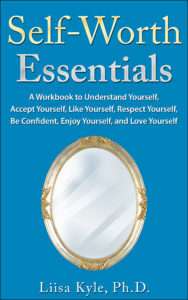
Available here: http://bit.ly/SelfWorthEssentials
Self-esteem is how you see yourself.
Self-worth is how you value yourself.
As a Ph.D. in Psychology and a life coach, I’ve spent the last twenty years working with many smart, accomplished people. It never fails to surprise me how many of these successful people harbor doubts about their self-worth.
Some question or downplay their talents. Some crave external validation — they seek any scrap of praise or approval from others. Some are “People Pleasers” doing too much for other people, to their own detriment. Others don’t really like themselves, deep down. They find fault with themselves easily. They are overly harsh with themselves. They have a sense that they could be better or different than they perceive themselves to be. It’s more than feeling like an imposter: deep down, they feel that they’re not really worthy of love or success or both.
They are wrong.
Everyone is worthy of love. Everyone is worthy of success.
Over the past twenty years, I’ve devised practical techniques to improve people’s perceptions of themselves (i.e. their self-esteem) as well as their self-worth (the extent to which they value themselves). I’ve designed a workbook to guide you through the seven essential phases of improving your self-worth.
This book is for you if you would like to:
* understand yourself better
* accept those things you like least about yourself
* like yourself more
* treat yourself better
* improve your self-confidence
* find new ways to enjoy being you, and
* learn to love yourself
Yes, you’re worth it. Click here to get started: http://bit.ly/SelfWorthEssentials

September 7, 2016
Growing your Talents

image via commons.wikimedia.org
Growth is good. It doesn’t matter if you are a novice or a wizened expert, you have the opportunity to deepen and broaden your talents. You can refine and hone your skills. You can broaden your knowledge and your perspective. You can collect new experiences in new situations. You can blossom through new opportunities.
To the extent that you focus your attention on growing your talents:
you will inject new energy into your enterprises
you are likely to improve or ease your efforts
you may have fun
you might find new approaches, solutions, or connections
you could proceed in new, unforeseen directions
you may cross-pollinate different projects, talents, and ideas
How to Grow Your Talents
This depends on your unique preferences and circumstances. How do you like to learn? What has worked well for you in the past?
If you enjoy more structured learning, the easiest, funnest way to grow is to sign up for a class or workshop. Committing to a class means that you have a pre-determined time at during which you are devoted to learning. Whether in person or online, classes and workshops also provide the opportunity to interact with other people drawn to the same experience.
A similar approach might be to gather with people to share what you know and teach each other. This might be once in a while or fairly regularly. For example, I was part of an Artful Women’s Group that grew out of a metalsmithing class. We all loved working with metal…and ,being DaVincis, we all enjoyed other creative endeavors as well — origami, textiles, painting, sculpture, you name it. We gathered once a month as an erstwhile Creativity Club. Sometimes, we each worked on our own projects. More often, we took turns teaching each other different skills and techniques. Occasionally, we’d make a day of visiting galleries together. No matter what we did, we had fun and our talents grew.
It worked well for us but would not for someone who prefers to learn solo. If you prefer to teach yourself, or to learn from books, or to spend time researching things online, watching YouTube videos and/or otherwise figuring out things for yourself, then clearly these would be more pleasant and successful ways for you to grow your talents.
Whatever your interests, whatever your talents, there is a wealth of information and examples online — and countless opportunities to learn and grow.
My husband pursues photography buy finding ways online to keep growing, learning, and engaged. For example, he’s part of an online community that has weekly photography contests using specific assignments. Those who wish to post entries receive votes and feedback from others. It’s a fun, way to learn from others and provides regular challenges to grow in new directions.
You owe it to yourself to hone your talents. What would be the easiest, funnest most appealing ways to do so?
***
Activity: Take a few moments to consider the easiest, more appealing ways you can grow your talents.
Activity: Take a further few moments to make commitments to develop and grow your talents, going forward: Sign up for a class or workshop. Find an online or local group of people who share your interests. See if there are books in the library or videos on YouTube or local events or exhibitions. Make a regular appointment with yourself for the purpose of honing your talents.
***
 Check out my book YOU CAN GET IT DONE: Choose What to do, Plan, Start, Stay on Track, Overcome Obstacles, and Finish. Available here for only $3.99: http://bit.ly/YouCanGetItDone
Check out my book YOU CAN GET IT DONE: Choose What to do, Plan, Start, Stay on Track, Overcome Obstacles, and Finish. Available here for only $3.99: http://bit.ly/YouCanGetItDone
***
Want to re-publish this article? Go for it – just include the author’s name, a link to this original post and the following text blurb:
Are you struggling with too many talents, skills, ideas? You may have The DaVinci Dilemma™! Find tools, fun quizzes, coaching, inspiration and solutions for multi-talented people at http://www.davincidilemma.com/ .





